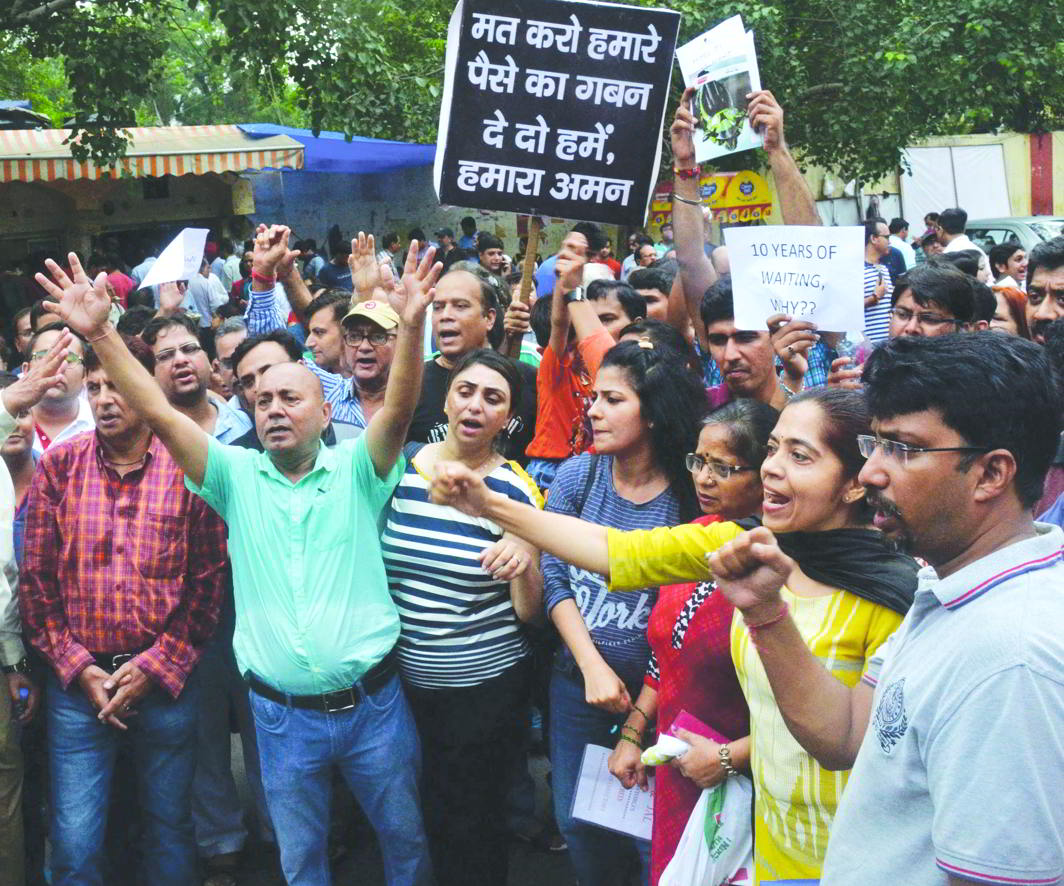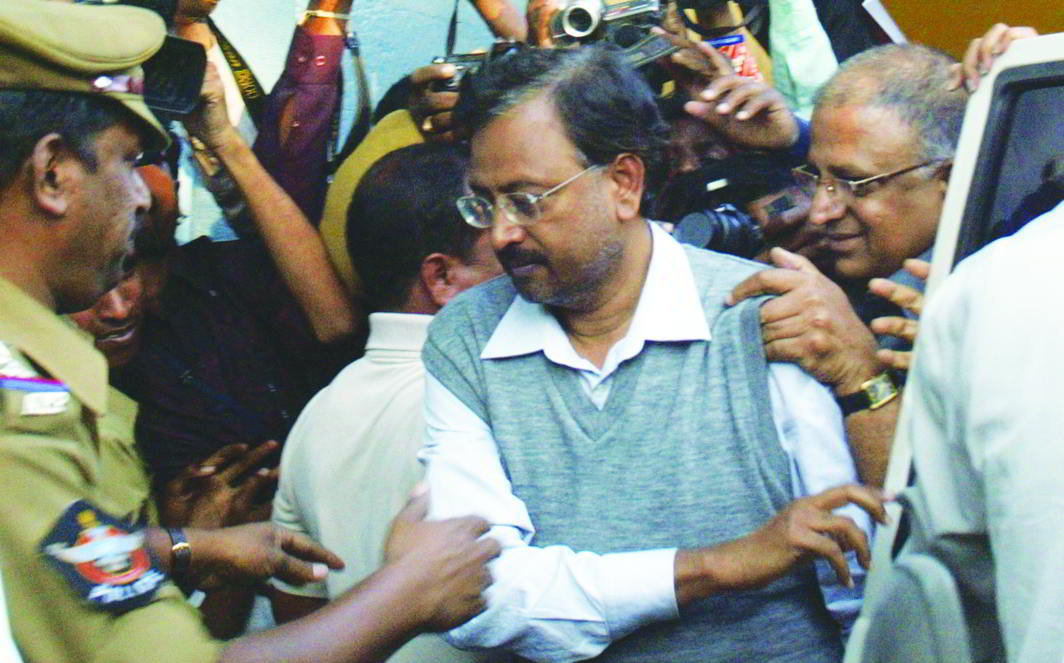
As more and more bad debts pile up, the Code aims to resolve issues in a time-bound manner and amend related laws

~By Mukesh Kacker
While demonetisation and GST hogged attention and media coverage, another financial sector event of importance passed off without much fanfare. One of the most significant reforms in recent years has been the enactment of the Insolvency & Bankruptcy Code, 2016 (IBC).
The reasons for this statement are not far to seek. The deluge of stressed assets, bad debts and resulting NPAs has crippled the banking sector. On the one hand, it has brought lending activity to a virtual standstill, stymying growth, and on the other hand, it has pushed the government in a corner as it tries to recapitalise public sector banks without increasing the fiscal deficit beyond the danger mark. The resolution of insolvency till now has resembled a free-for-all with multiple agencies—the Company Law Board, Debt Recovery Tribunals, Board for Industrial and Financial Restructuring, high courts—and laws—Companies Act, 2013, SICA (Sick Industrial Companies Act), 1985, RDDBFI (Recovery of Debts Due to Banks and Financial Institutions) Act, 1993, SARFAESI (Securitisation and Reconstruction of Financial Assets and Enforcement of Security Interest) Act, 2002—creating a lot of confusion but achieving precious little. A huge amount of capital has, therefore, remained locked instead of being deployed in the engine of growth.
The Insolvency & Bankruptcy Code, 2016, seeks to put an end to this deplorable state of affairs. One, it aims at consolidating all existing insolvency related laws as well as amending them, including the Companies Act. Two, it is to have an overriding effect on all other such laws. Three, it aims to resolve insolvencies in a strict time-bound manner. Four, it introduces a paradigm shift in the handling of resolution of insolvencies, from the existing “debtor in possession” to a “creditor in control” regime. And lastly, it clearly defines the order of priority of dues and renders government dues junior to most others. Thus, the objectives are laudable but it remains to be seen how effective the IBC is going to prove.
The IBC came into force in December 2016 and will be celebrating its first anniversary soon. Along with banks, the RBI has also faced sharp criticism for failing in its duty as a regulator and allowing the problem of bad assets/NPAs to degenerate to this level. Perhaps stung by the criticism, the RBI constituted an Internal Advisory Committee (IAC) to help it with the cases to be referred for resolution under the IBC.
In June 2017, the IAC considered the top 500 stressed exposures in the banking system and identified 12 accounts for immediate reference under the IBC. Accordingly, the RBI directed the banks concerned to start insolvency proceedings in these 12 cases. Later, in September, it was reported that the RBI had also sent a second list to banks with a direction to resolve them by December, failing which they should be referred for proceedings under the IBC. It has been reported that Insolvency Professionals (IPs) have already been appointed in most of the 12 cases and almost 300 others in various stages of hearing.

As this is a new law, it is natural that the adjudicating tribunal (National Company Law Tribunal or NCLT) and the regulator (Insolvency and Bankruptcy Board of India or IBBI) will face many issues that had not been thought of at the time of drafting the legislation. While some are only procedural, though important in nature, there are also a few issues that have a direct bearing on the raison d’etre of the IBC.
REFORM PROCESS
The government recognises that the success of the IBC is crucial to the overall success of the reform process and has been quick to take note of these concerns. On November 17, 2017, the government appointed a 14-member committee under corporate affairs secretary I Srinivas to assess the functioning of the IBC and examine issues that could impact the framework prescribed under the law. The committee includes IBBI Chairman MS Sahoo, representatives from RBI, the department of financial services and external experts.
The first practical issue of concern is that the IBC makes no distinction between financial creditors and operational creditors (like vendors, trade creditors and employees) in so far as approaching the NCLT after a default is determined. This is problematic and an invitation to frivolous applications under the IBC. The mandate before the NCLT under the IBC is to resolve insolvency and bankruptcy and not recovery of business/trade dues or settling the claims of employees. The NCLT can be submerged under a deluge of such applications from trade creditors and employees. The NCLT had to actually dismiss a large number of such applications but the fact remains that such an application per se is not disallowed under the Code. This can lead to wastage of precious time and energy of all parties and unnecessarily increase the workload of NCLT. The committee needs to look into this and introduce stringent criteria for admissibility of applications from operational creditors.
Another procedural issue that has cropped up concerns the treatment of home buyers when insolvency/bankruptcy of a housing infrastructure company is being considered. These home buyers do not fit into either financial creditors or operational creditors. Their status under the IBC became the subject matter of discussion after the admission of the case brought in by IDBI Bank against Jaypee Infratech, one of the 12 cases picked out by the RBI in June 2017.

Jaypee Infratech had promised to deliver 32,000 villas, apartments and plots but could not deliver any to about 25,000 investors/buyers. So what is the status of these buyers on two issues—filing a case under IBC (aren’t they creditors?) and the seniority of their claim in the priority of dues? The committee also needs to look into this and bring in suitable amendments.
TREATMENT OF PROMOTERS
However, the most important issue that confronts the policymakers relates to the treatment of promoters under the IBC. Aren’t the promoters primarily responsible for bringing their companies to the state of insolvency and bankruptcy? And should they not be treated more strictly or altogether differently? All procedures of solving bad debts—corporate debt restructuring, ARCs taking on the bad debts or resolution under the IBC—involve accepting “hair-cuts” by the debtors, so the assets ultimately are available at a much whittled-down value. Knowing this, promoters who are personally rich will always try to get back possession of their companies at much-reduced cost. Should they be allowed to do so and will it not defeat the very purpose of the IBC?
There are two stages at which a promoter can move to regain possession of his company and both need to be looked at critically. The first stage is when a resolution plan is to be presented to the creditor’s committee. Should promoters be allowed to propose a resolution plan? At the moment, the IBC allows this. However, in order to weed out unworthy promoters, the regulator (IBBI) recently made disclosure requirements at the time of making a resolution application much stricter.

The IBBI, on November 7, amended the Insolvency & Bankruptcy Board of India (Insolvency Resolution Process for Corporate Persons) Regulations, 2017. As per this amendment, a resolution plan must contain all details of the resolution applicant and other connected persons: conviction for any offence, criminal proceedings pending, disqualification under the Companies Act to act as a director, identification as a wilful defaulter, debarment by SEBI and also transactions with the corporate debtor. However, as these requirements have been mandated by the IBBI regulations and not by the mother Act, any rejection of a resolution application by a promoter on these grounds will be open to legal challenges. Hence, these amendments need to be backed by necessary changes in the IBC also. The committee under the corporate affairs secretary needs to look into this very thoroughly.
The second stage when a promoter can try to regain control of his company is when it goes into liquidation after the rejection of resolution plans. Should the promoter be allowed to bid here? I feel that the last chance to a promoter to redeem himself should be at the stage of proposing a resolution plan. If that fails either as a result of the applicant not meeting the credential requirements or the plan not being approved by the committee of creditors, then the promoter should be barred from any further involvement in bidding at the liquidation stage, except for his personal assets that might have been pledged. This is another issue that the committee under the corporate affairs secretary must focus on to introduce necessary changes in the IBC.
Lastly, there is the issue of accountability and criminal culpability of promoters in fraud. It was reported in The Economic Times that US-based risk consulting firm Kroll had questioned the narrow focus of the IBC on a time-bound resolution process which avoids the issue of criminal culpability of promoters and stakeholders in fraud. According to Kroll, without accountability “the entire process is going to become a legalised and formal way of writing off fraud”. The Economic Times also quoted Tadashi Kageyama, head of Kroll Asia’s operations: “Unfortunately when there is a bad business, there is typically, an element of fraud. All the stakeholders, the banks, the government as well as the borrowers, want to lift the bad loans as quickly as possible, but our question is who is going to investigate the fraud and who is going to be accountable?”
We have the example of Satyam and Kingfisher Airlines where the Serious Frauds Investigation Office carried out investigations but they were ordered because of the special focus those cases received, not because of any systemic process kicking off automatically.
An important task before the committee under the corporate affairs secretary is to introduce a process of detecting fraud and criminal culpability in each case of insolvency resolution before the NCLT. Only then will the IBC be a law with teeth.
—The writer is a former IAS officer and an expert on corporate governance

